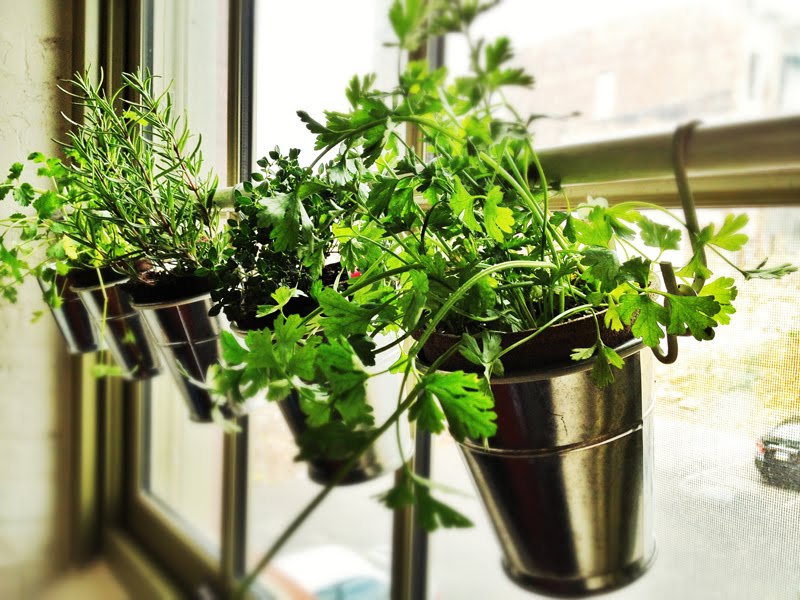Growing An Edible Garden In Singapore

It can be quite challenging growing an edible garden in Singapore with such limited space, particularly if you do not have a balcony, roof, or yard. For those who are completely new to the concept and are unsure whether they have a green thumb, here are some easy, fool-proof, and frugal tips on how to start your very own edible garden.
The plants listed below are some of the easiest to grow, and the best part is, you probably already have them on your shopping list or already in your food scraps. So don’t throw these “waste products” away, as these are vegetables that you can grow again and again after you’ve already chopped off and eaten the best parts.

1. Sweet potato leaves
Many people enjoy eating sweet potatoes. They are very easy to grow, as they thrive in Singapore’s climate. All you need to do is get a sweet potato, and put part of one end in water (suspended using toothpicks). The buds will start to form shoots and leaves.
The best part is that once the buds start to form roots, you can pluck them off and plant the buds in soil, and then eat the potato as you normally would. A word of caution here – do not do this with regular “white” or “red” potatoes. Regular potatoes belong to the Solanaceae family (aka nightshade family) and along with tomatoes, the leaves and stems are highly poisonous. The sweet potato, though similar in name, belongs to the Convolvulaceae family (aka morning glory family), which is the same family as yams and jicamas.
2. Basil, mint, rosemary, thyme, sage, and oregano
All these herbs can be regrown from cuttings. This means that all you need is a small piece of the plant, just a single leaf will do, and with water (or soil) and some time (and patience), the plant will regrow. I usually start out with just putting the cuttings in water, changing the water daily, and then transplanting when I think the root system is sufficient.
3. Leeks, scallions, chives, Chinese parsley (aka coriander or cilantro), garlic & onions
These all belong to the Allium or the Apium family. As long as there is some roots or an in-tact bulb, these can regrow from your food scraps. All you need to do is put them in water to revive them. You will have to change the water daily and make sure only the bottom part touches the water. You can use toothpicks to keep the scraps upright, but you can also just chop a whole bunch of scraps to fit snugly in your container.
There are two general varieties of garlic sprouts, with the floppy ones being more common in Asia. You can also use garlic cloves to regrow an entire garlic bulb when planted in soil. Although not in the Allium or Apium family, lemongrass can also regrow from food scraps.
4. Sprouts from mung beans, adzuki beans, soy beans, fennel seeds, and fenugreek seeds
Growing sprouts is also a really easy thing to do. Not only do they provide a densely nutritious yet low calorie food, growing them doesn’t require much space at all. All you need to do to germinate the beans/seeds is to wash them, soak them in water, and then drain all the water out. Some seeds are best grown in the dark, while others require indirect light. In the States, sprouting alfalfa and broccoli seeds is quite common, but in Singapore, mung bean, adzuki bean, soy bean, fennel, and fenugreek are readily available in nearly every supermarket. Once sprouted, they make a nice addition to a salad, or can be eaten alone as a crunchy snack.
There are other easy-to-grow plants, but with the space constraint, these would be a good start for anyone who is new to urban gardening. The plants on this list are all space-efficient, and can be used in many different cuisines. They are also quite easy to find at your local market.


